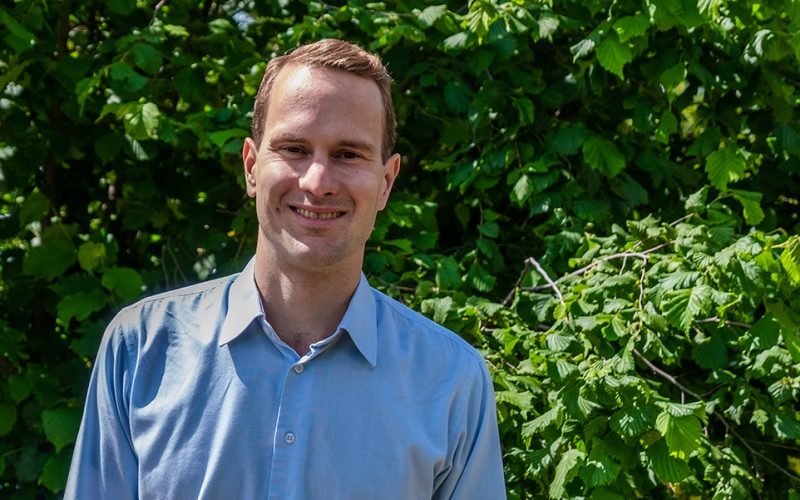Bart is working as a postdoc within UMC Utrecht on a radiostethoscope that can be used to measure from the outside whether the heart is deteriorating. This makes it possible to adjust the treatment of patients with heart failure as early as possible. Even before patients develop additional symptoms.
Proper drug treatment can prevent heart failure symptoms from returning or getting worse. But what is the right time to readjust medication? Often patients return to the hospital due to new symptoms. There they can examine whether the heart is working less well and patients can be treated properly. “The tricky thing is just that the heart has been pumping less well for some time before patients notice,” Bart says. “A hospitalization generally worsens the prognosis for a patient.”
Biomedical engineer Bart Steensma may have a solution to this problem. “I have designed a radio stethoscope that allows you to simply measure outside the body how well the blood is flowing through the heart,” Bart explains. “I will investigate whether this device can measure that the heart is pumping less well even before heart failure patients develop symptoms and need to go to the hospital.”
The idea originated in corona time and is based on a technique from MRI.
“With the same radio antennas used in an MRI scanner, we can measure movement outside the MRI scanner, for example the pumping of blood through a heart,” Bart explains. “During the corona period, I started soldering a prototype based on that principle. A device that patients themselves could use at home. And a second prototype emerged from that in the RF Lab at the 7T group. Developing this radio stethoscope is a meticulous process in which Bart has to meet all kinds of legal requirements and also demonstrate the efficacy of the radio stethoscope. This is now being done in collaboration with the medical technology department.
The Dekker grant of nearly €280,000 awarded by the Heart Foundation gives the research a substantial boost. “A safety study is ongoing and we can start involving patients with heart failure earlier in the research and development of this device.” Ultrasound is one of the current standards for measuring heart function. Bart hopes that the radiostethoscope will eventually yield similar results. Then the use of this device might also become interesting for patients with heart failure who are treated on an outpatient basis.
If this succeeds, in a few years people with heart failure can easily be monitored at home with this device. Doctors can then decide in good time whether people need more medication, for example, to prevent symptoms. This will improve patients’ quality of life, as well as reduce the number of hospitalizations.
Bart works intensively within UMC Utrecht with principal investigator and professor Nico van den Berg. There are already concrete plans to realize a spin-off. For this, Bart is working closely with Utrecht Holdings. “I am interested in technology. What could be better than using that technology to contribute to people’s health? A spin-off can increase the impact of this project, improving the quality of life of patients, but also reducing the number of hospitalizations. It gives me satisfaction to contribute to that.”
